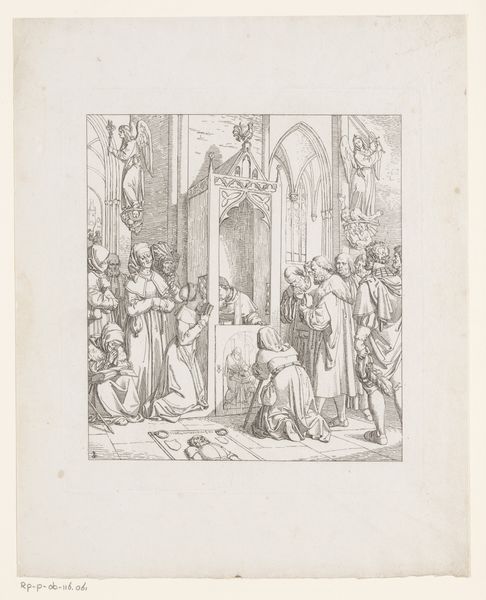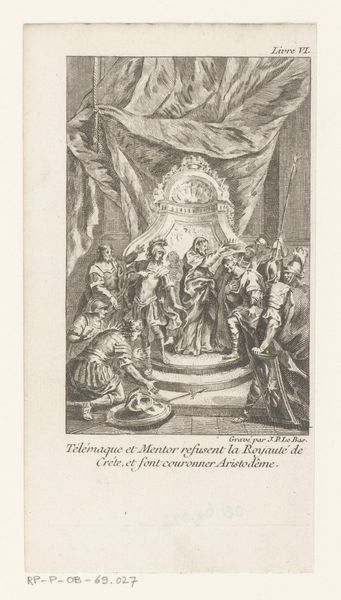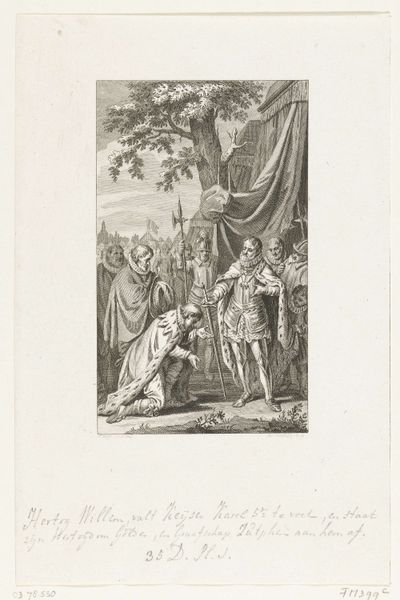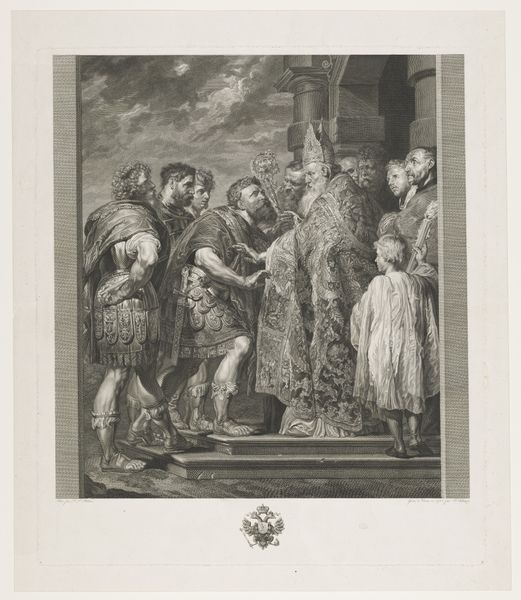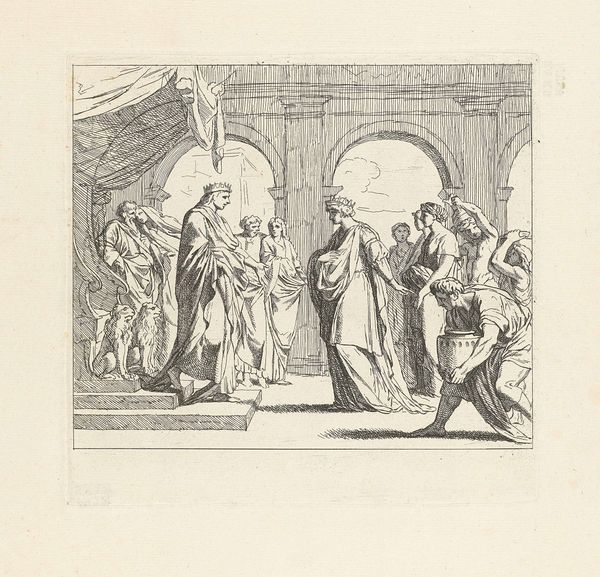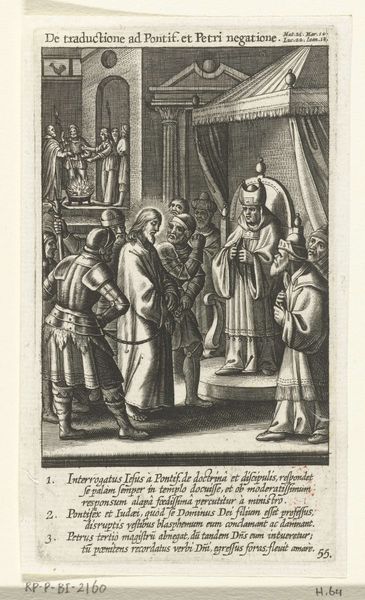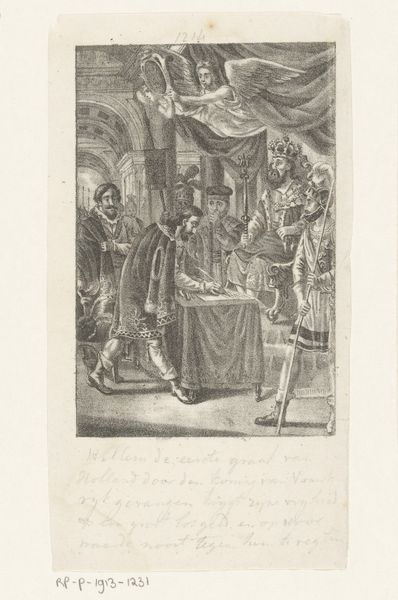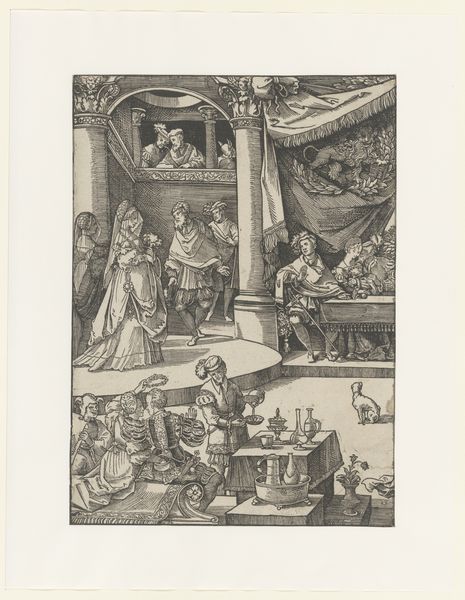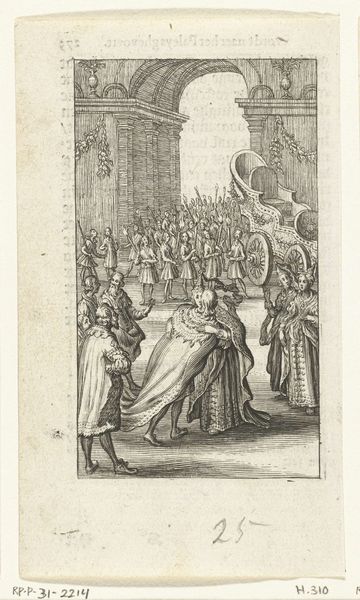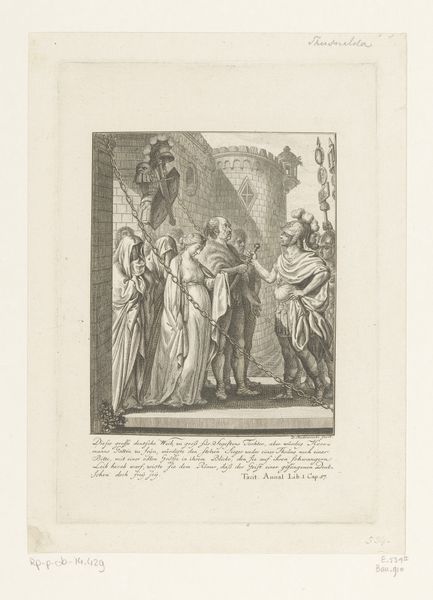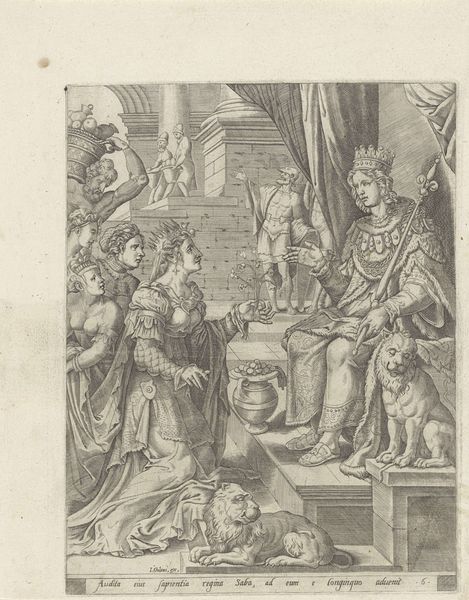
drawing, pen, engraving
#
drawing
#
comic strip sketch
#
medieval
#
narrative-art
#
pen illustration
#
old engraving style
#
figuration
#
personal sketchbook
#
sketchwork
#
ink drawing experimentation
#
pen-ink sketch
#
pen work
#
sketchbook drawing
#
pen
#
history-painting
#
storyboard and sketchbook work
#
engraving
Dimensions: height 155 mm, width 90 mm
Copyright: Rijks Museum: Open Domain
Curator: What strikes you first about this piece? The drama? Editor: It feels like looking into a snow globe, except instead of swirling flakes, it's churning emotions! So much vulnerability on display... who are we looking at, by the way? Curator: We are viewing an engraving entitled "Dirk VI Begs the Bishop of Utrecht for Forgiveness," dating to sometime between 1809 and 1899. Editor: Ah, that explains the theatricality. History as morality play, right? I notice the sword is prominently placed in the center; it’s discarded but gleaming, almost accusing. Curator: Precisely. Swords, of course, traditionally symbolize power, authority, and justice. Its placement before Dirk VI kneeling signals defeat and submission. Consider the Bishop's raised hand – a gesture of potential mercy but also dominion. It evokes both forgiveness and a reminder of the Church's overarching authority. Editor: And those figures looming behind Dirk! Some seem sympathetic, others judgmental. Like a divided conscience made visible. There’s a push-and-pull, and the soft hatching helps convey those raw feelings. It is history brought into the here and now! Curator: Indeed. Engravings like this were frequently produced to remind viewers of moral principles and the consequences of defying authority. But they also capture the messy reality of human emotion, duty, and power. Think of all the internal conflict being depicted. Editor: Makes you wonder about the 'sins' committed! I almost feel bad for Dirk... almost. It really does show how one’s legacy can hinge on such moments of seeking absolution. Curator: These depictions shaped collective memory; this becomes part of the folklore around power. So we have to ask what the piece adds to that narrative. Editor: I agree; it prompts me to think about how leaders reconcile—or fail to reconcile—with their misdeeds in the court of history, and their relationship to forgiveness. Thanks! Curator: It's a potent reflection of power and redemption, and its ability to resonate across centuries is undeniable. A fascinating study indeed.
Comments
No comments
Be the first to comment and join the conversation on the ultimate creative platform.
